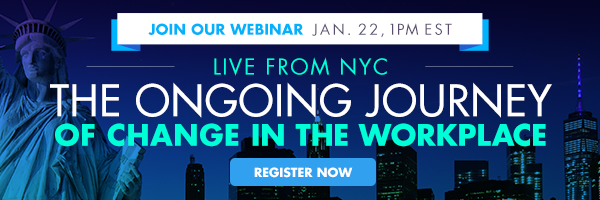How to Use Your Multigenerational Workforce To Your Advantage


If you gathered a professional violinist, pianist and flautist who didn’t know each other and told them to just start playing, the result would be a cacophony.
But if you brought the three musicians together, provided sheet music and gave them time to prepare with their own instruments, then when they began to play together, it would surely sound wonderful.
This is how workplace leaders should approach managing their multigenerational workforce. The average office is composed of a variety of violinists (Baby Boomers), pianists (Gen X-ers) and flautists (Millennials). And when workplace leaders understand how to utilize their strengths, improve (or work around) their weaknesses and help these groups collaborate together, the result is an office symphony.
The Multigenerational Workforce: What Each Generation Brings
Baby Boomers: Loyalty and Experience
In a 2016 survey, the AP-NORC Center for Public Affairs Research found that 41 percent of U.S. employees aged 50 and older have spent two decades with the same organization. And among that segment, nearly one in five has been with the same company for at least 30 years.
What this means is Boomers are not only loyal to quality employers but also have decades of experience to share—both about the company itself as well as the entire industry in which they work. They can offer their Gen X and Millennial counterparts important insight into how best to support the company’s mission and thrive as professionals.
Giving Boomers the opportunity to mentor younger employees shows you value what they have to say and you appreciate their commitment to the company. In return, they will reward you with continued loyalty and high levels of productivity.
Gen-Xers: The Mediators
Gen-Xers have the somewhat-irksome honor of being the “in-between” generation. Often, articles about managing the multigenerational workforce will focus almost exclusively on Boomers and Millennials, neglecting to discuss Gen-Xers at all. But it is actually this state of “in-between” that makes them so important in the workplace.
While the start and end dates of Generation X are less defined than the generations on either side, Gen-Xers are usually defined as those born in the mid-60s through 1980. Since they started their careers either just as the technological revolution got started or when it was still somewhat in its infancy, they have the best understanding of office life with and without technology.
Whereas Boomers had to drastically change their day-to-day work lives to accommodate new technology and Millennials can’t imagine doing their jobs without it, Gen X-ers learned how to navigate the digital and analog worlds simultaneously. As a result, they are the perfect liaison between the generation considered tech-resistant and the generation believed to be tech-obsessed. They can help break down communication barriers and resolve conflicts between the older and younger members of the workforce since they speak both languages.
Millennials: Energy and Enthusiasm
While there are plenty of critiques about Millennials in the workplace, the one thing you can always count on is a Millennial’s commitment to a cause they care about. This generation places a lot of weight on a company’s mission and its contributions to the community. So if you can align your Millennial employees with the organization’s vision and goals, you’ll have a set of dedicated cheerleaders who will commit themselves to the success of the business 100 percent.
Additionally, as experts in technology and traditional early adopters, you can call on Millennials to help guide their more seasoned colleagues when new workplace technology is implemented. They can show Boomers and older Gen-Xers the best ways to incorporate the technology into their workflow and make the process less intimidating.
Fostering Harmony In a Multigenerational Workforce
Acknowledging each generation’s strengths and opportunities to contribute is a good start. Here are a few other tips for fostering better collaboration among them:
1. Use Activity-Based Working (ABW)
An agile workplace strategy like activity-based working(ABW) enhances collaboration among employees of all ages. Make sure you have ample space for casual conversation in addition to more formal meeting rooms and private spaces for quiet work.
2. Set Guidelines for Communication and Technology Use
While it’s great to have so many options for communicating with each other—Slack, Google Hangouts, email and project management tools, to name a few—this can quickly get overwhelming. On average, it takes employees almost 20 minutes to refocus their attention after being interrupted.
Help them set boundaries around the use of technology by setting guidelines for what methods of communication are appropriate and when. For instance, encourage employees not to send or respond to emails after a certain hour of the day and turn off Slack notifications when they’re not at work. If it involves an urgent matter, they should call.
3. Acknowledge Shared Wins
One of the best ways to encourage collaboration within a multigenerational workforce is to recognize it when it happens. Take the time to praise employees for successful collaborations during company meetings and in internal communications.
Managing a multigenerational workforce is certainly no easy task. But as long as you ensure every employee knows the importance of their role in the organization, you’ll cultivate a harmonious environment.
